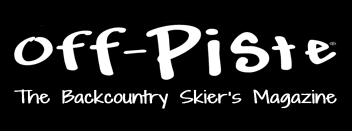What if you could wear the same glasses on the up and the down?
Ski goggles are great. They let you see and ski with precision when it’s snowing, blowing and deep. But, as a backcountry skier, goggles are only good for skiing down. Try and wear them on the uptrack, and you’ll quickly learn why it’s a bad idea — they fog up. While goggles are great, they are another piece of gear to put on and take off as you transition between climbing and skiing. Wouldn’t it be nice to have one set of eyewear that works on the skin track and the descent?
When I first saw the Smith Bobcat sunglasses (and the Wildcat), I thought, “Hey, these might work for climbing up and skiing down.” So, that’s what I’ve been doing this winter: testing the Smith Bobcat in various backcountry ski conditions. The Bobcat and Wildcat are essentially the same sunglasses, with the Bobcat being designed for smaller faces and the Wildcat for larger faces.
 Do It All Eyewear – Smith Bobcat Sunglasses
Do It All Eyewear – Smith Bobcat Sunglasses
As much of a gearhead as I am, I prefer to ski versus fiddle with my equipment and clothing at every transition. Changing between goggles and sunglasses is just one of those things we all do. But what if you didn’t have to? Shield-style sunglasses, like the Smith Bobcat or Wildcat, bridge the gap between sunglasses and goggles with wide coverage and swappable lenses.
After a week of daily touring in the Smith Bobcat, I’m a convert. Do they totally replace goggles? Not entirely, but their range of usability for storm skiing is much better than a more traditional pair of sunglasses.
Goggle-Like Coverage for the Up and Down
The Bobcat’s hybrid design combines near goggle-like coverage with all the airflow and easy-wear feel of sunglasses. The combination means you can wear them while breaking trail and lapping the uptrack without fogging issues. When it comes time to ski down, their shield lens coverage works for all but the deepest, stormiest days.
In stormy conditions, I found it helpful to have a hat with a brim or a hood to help shelter the glasses from snow build-up across the top of the frame. I also experienced the occasional foggy lens issues with the Bobcats, mainly when taking a break. But unlike goggles, it’s an easy fix — just start moving again. In contrast, goggles hold small amounts of moisture even if you clean them in the field. Shield-style sunglasses offer plenty of airflow to keep them fog-free as long as you’re moving. You can also give them a quick wipe with a lens cloth, and you’ll be back in action for the up and the down.
Multi-Purpose Sunglasses
And the Smith Bobcats aren’t just for skiing. They’re a solid choice for mountain biking, too. Their full-coverage shape keeps mud and debris out of your eyes, and a swappable lens sets you up for low-light trail riding. Smith’s ChromaPop lens tech is as terrain-defining on the trail as in the snow.
The Bobcat comes with two lenses, one clear and one tinted ChromaPop lens – $219
Check out the Smith Bobcat and Smith Wildcat Sunglasses
Using our product links helps support offpistemag.com. While the website is partially funded through affiliate sales, we only review and promote products we test and believe merit being highlighted.







